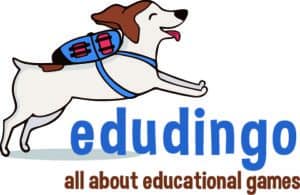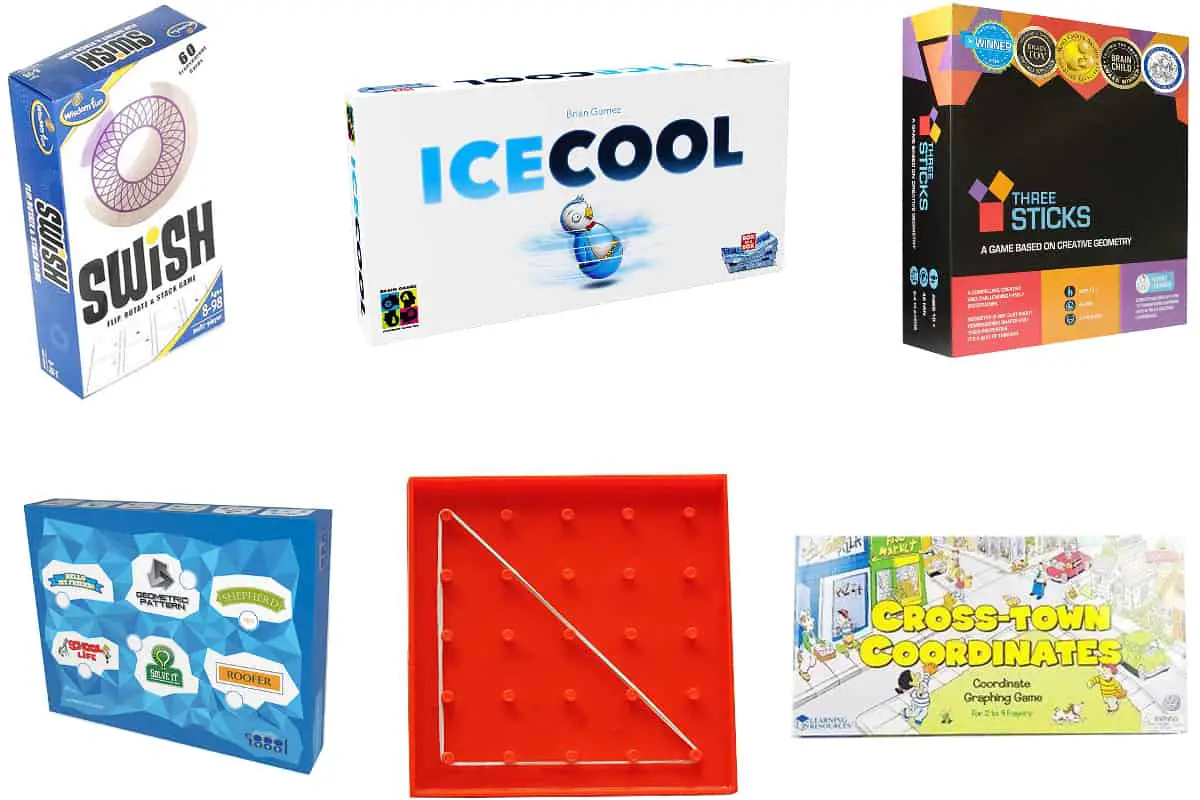This post contains affiliate links.
How cool would it be to have geometry made simpler by some geometry board games? Geometry tends to be a struggle for many primary and middle school students. So I checked that out for you.
How many geometry board games are available? Six useful geometry board games for 6 to 14-year-old children are compared here. They are best used in a small group classroom setting or at home. I highly recommend Kitki Three Sticks and Swish, as well as using Geoboards of course.
Geometry Board Games Comparison Table
These games help teach geometry concepts and build spatial reasoning skills while making learning fun! The table below will help you choose the game that works best for your students or children.
| Game | Age | Players | Price | For | Topic* | Rating |
|---|---|---|---|---|---|---|
| Geoboard | 3‑8 | 2+ | $$$ | School | 2D Shapes | ★★★★☆ |
| Ice Cool | 6+ | 2‑4 | $$ | Home | Angles | ★★★☆☆ |
| Swish | 8+ | 2+ | $$ | Home | Spatialization | ★★★★★ |
| Kitki Three Sticks | 8+ | 2‑4 | $$$ | Home, School | Compound Shapes | ★★★★★ |
| Shepherd | 13+ | 2‑6 | $$$ | School | Functions | ★★★☆☆ |
| Crosstown Coordinates | 10‑11 | 2‑4 | $$$ | School | Plotting points | ★★★☆☆ |
*For more description of the topics:
2D Shapes: 2D Shape recognition
Angles: Estimating angles, identifying the types of angles
Spatialization: Spatial visualization skills
Compound Shapes: Identifying compound shapes, calculating their areas
Functions: Plotting functions on a graph, Identifying common functions such as y=x
Plotting Points: Plotting points on a graph
Geometry Board Games for Kindergarten
Geoboard with Geometric Shape Pattern Cards (Curious Minds)
★★★★☆
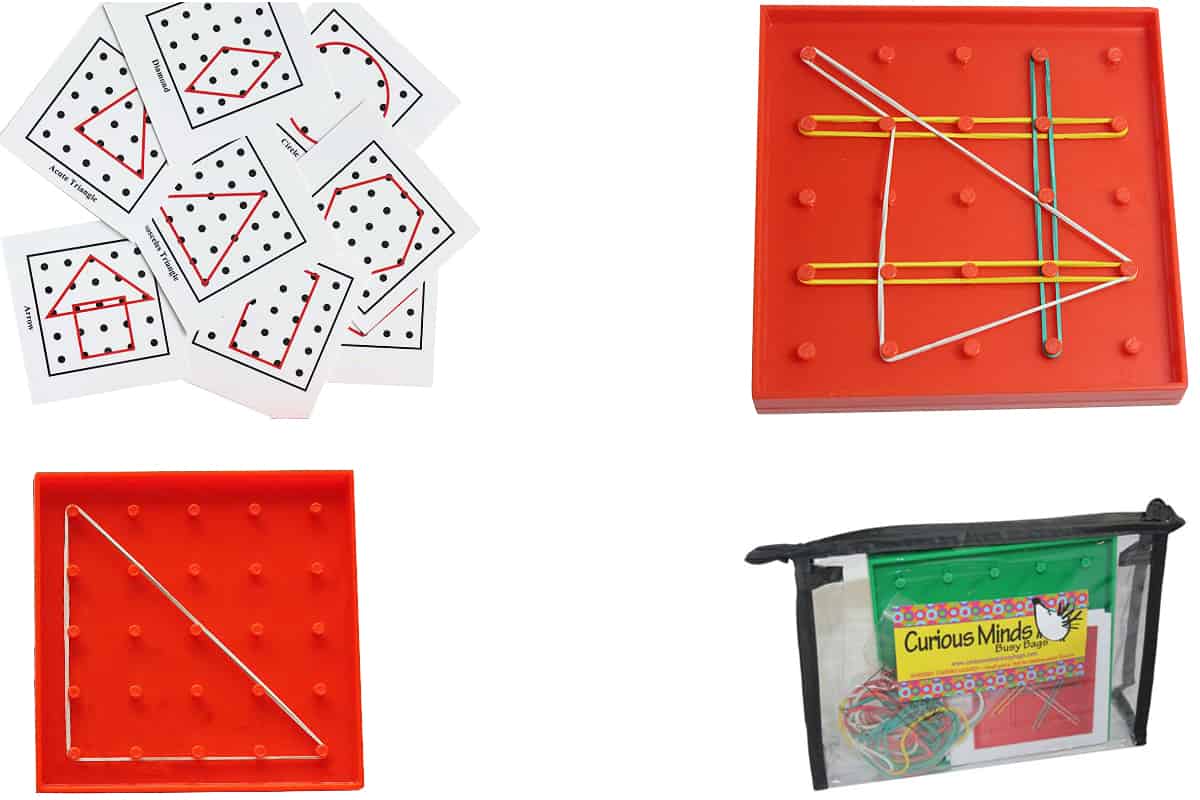
Players: 2+ | Age: 3-8 | CCSS Grade: K1 – Grade 2
Geoboards helps teach the fundamentals of geometric shapes in a way that tactile and visual learners will appreciate. These fun-sized geoboards make it easy for kindergarten children to engage with the patterns and shapes they should learn. Pair students together and have them compete to determine who can recreate the 2D shapes depicted on the cards in the least amount of time.
helps teach the fundamentals of geometric shapes in a way that tactile and visual learners will appreciate. These fun-sized geoboards make it easy for kindergarten children to engage with the patterns and shapes they should learn. Pair students together and have them compete to determine who can recreate the 2D shapes depicted on the cards in the least amount of time.
One of the main benefits of this geometric shape pattern geoboard game is that it allows kindergarteners to both visualize and replicate 2D shapes such as circles, squares, and rectangles. Teachers can use the game with kindergarteners who are learning the basic shapes. However, the game can also be used with primary school students who are learning shapes such as the octagon or decagon.
However, the application doesn’t end there. Teachers can use the geoboards and geometric shape pattern cards to introduce the concept of compound shapes to grade seven students. This strategy inspires creative thinking as students are challenged to come up with the best compound shapes they can think of for the pairs of pattern cards selected.
The geoboard presented here is one of the many that are available. You can also easily find geoboard activity books that will propose multiple drawings using colored rubber bands. An additional benefit of geoboards is by the way the fine motor skills involved, especially when you are trying to make the shapes quickly.
Geometry Board Games for Primary/Elementary School
Ice Cool (Brain Games)
★★★☆☆
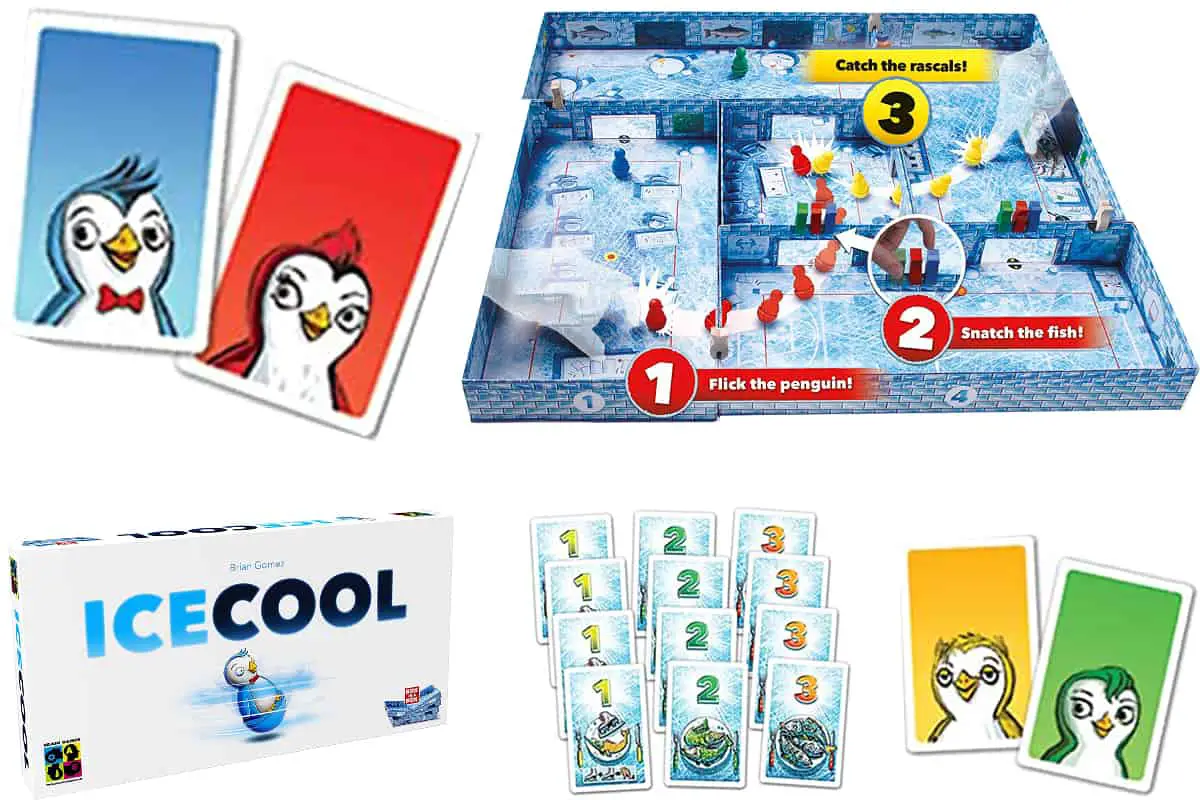
Players: 2-4 | Age: 6+ | CCSS Grade: 4 to 6
There is more to the Ice Cool board game than what meets the eye. On the surface, it seems like a board game primarily focused on building children’s dexterity skills. Parents can, however, find it useful for teaching children a practical way to use angles.
than what meets the eye. On the surface, it seems like a board game primarily focused on building children’s dexterity skills. Parents can, however, find it useful for teaching children a practical way to use angles.
The aim of the game is for each player to strategically flick a game piece in such a way that opponents are toppled over. Each flick represents an angle. Parents can encourage children to estimate the size of the angle used to flick a piece. They can also encourage their children to name the type of angle. Additionally, parents can show high school aged children the connection between angles and projectile motion in Physics.
However, younger children who are between 6 and 10 years old are more likely to find this game more appealing. Older children above 10 years are more likely to become bored easily. Furthermore, the closest connection to math is identifying types of angles; there’s no real mental challenge in the game that helps develop critical thinking skills.
Swish (ThinkFun)
★★★★★
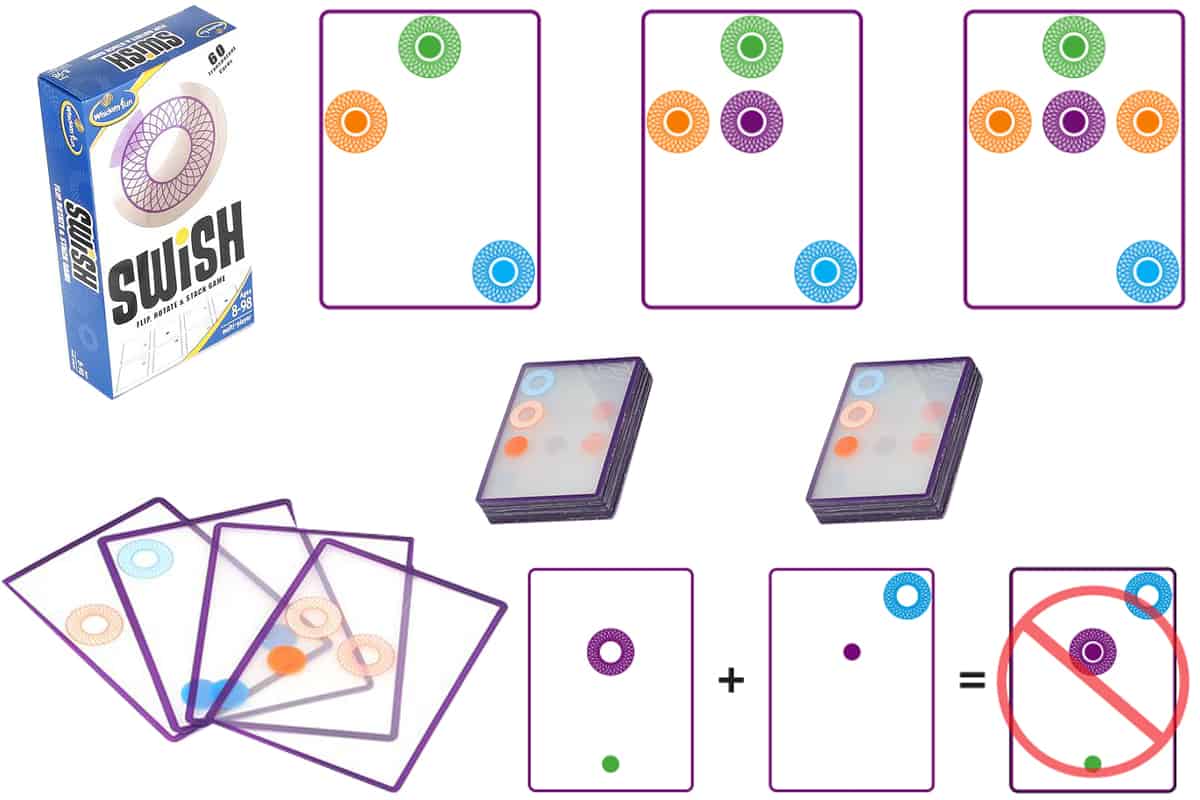
Players: 2+ | Age: 8+ | CCSS Grade: 6 to 8
I highly recommend Swish which is a spatial reasoning and pattern recognition game with multiple variations that can challenge children at various intellectual levels. Sixteen Swish cards are arranged in a 4 x 4 grid. Players then have to stack a series of cards so that all the solid colors on one card line up with the holes of the same color on another card. The player with the most stacks at the end of the game wins.
which is a spatial reasoning and pattern recognition game with multiple variations that can challenge children at various intellectual levels. Sixteen Swish cards are arranged in a 4 x 4 grid. Players then have to stack a series of cards so that all the solid colors on one card line up with the holes of the same color on another card. The player with the most stacks at the end of the game wins.
Elementary and high school-aged children can play this game. However, older children may be more intrigued by the spatial visualization skills involved. Spatial visualization occurs when children have to flip and rearrange cards in their minds to create a 3D stack of symbols. The game’s ability to develop this crucial spatial reasoning skill is important since children will need these skills for complex topics such as Circle Theorem.
Kitki Three Sticks (Kitki)
★★★★★
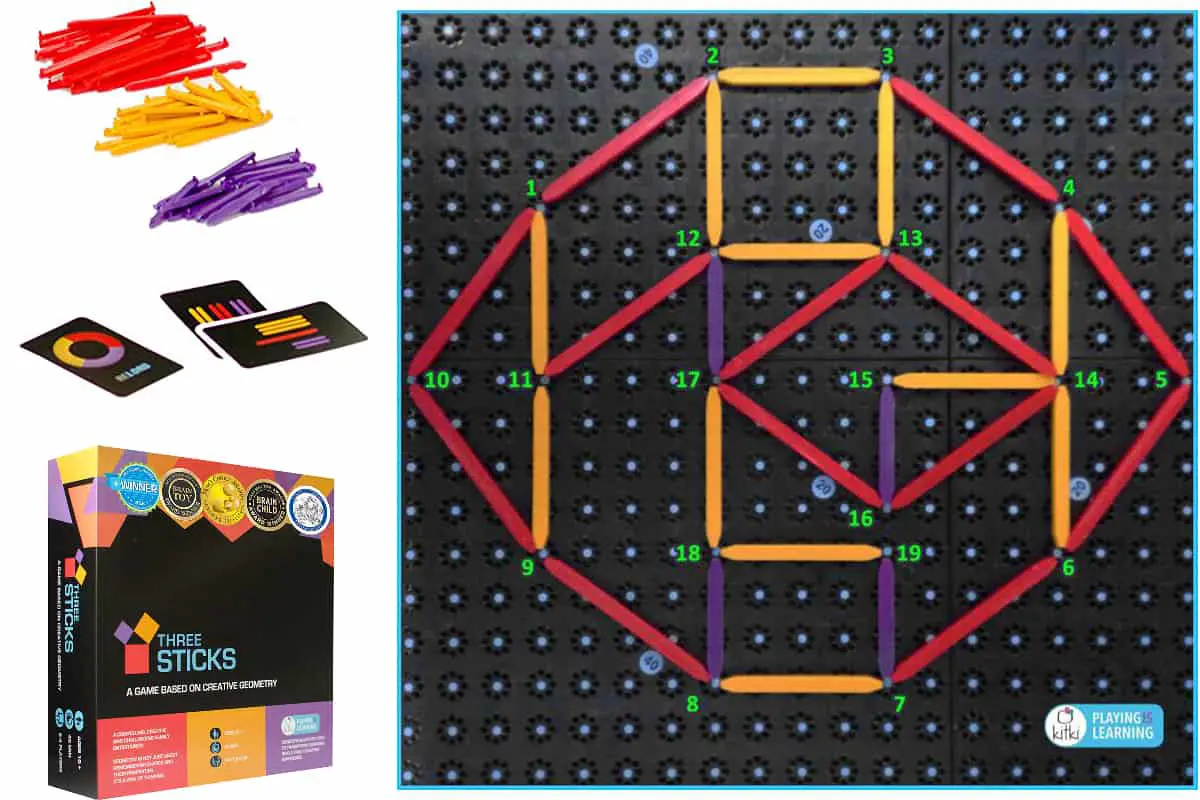
Players: 2-4 | Age: 8+ | CCSS Grade: 7 to 8
Kitki Three Sticks is a more advanced version of the Geoboard with Geometric Pattern Cards game with rules that help children create and implement their own winning strategies. It is great for demonstrating how basic shapes come together to create composite shapes because of the board’s size and the ease with which pieces can be fitted together. For instance, students may realize throughout the game that a triangle and a rectangle can be combined to create a trapezium.
is a more advanced version of the Geoboard with Geometric Pattern Cards game with rules that help children create and implement their own winning strategies. It is great for demonstrating how basic shapes come together to create composite shapes because of the board’s size and the ease with which pieces can be fitted together. For instance, students may realize throughout the game that a triangle and a rectangle can be combined to create a trapezium.
This game works well for teaching the concept of composite shapes to students in grades seven and eight. Teachers can even add a higher level of challenge by asking students to calculate the area of each shape they create. Therefore, the game can address the learning needs of a broad number of learners.
Additionally, students develop critical thinking skills. Those who can create the largest composite shapes (and identify all the shapes that combine to make these composite shapes) collect the most points. Therefore, they have to ask themselves:
- How can I connect these sticks to create a shape that makes sense?
- How many smaller shapes are within the larger shape I’ve created?
These critical thinking skills become highly useful as students advance to higher geometry in high school and beyond.
A small problem though is that the stick pieces begin dropping off the board after using the game for some time because they fit loosely into the holes on the board.
Crosstown Coordinates (Learning Resources)
★★★☆☆
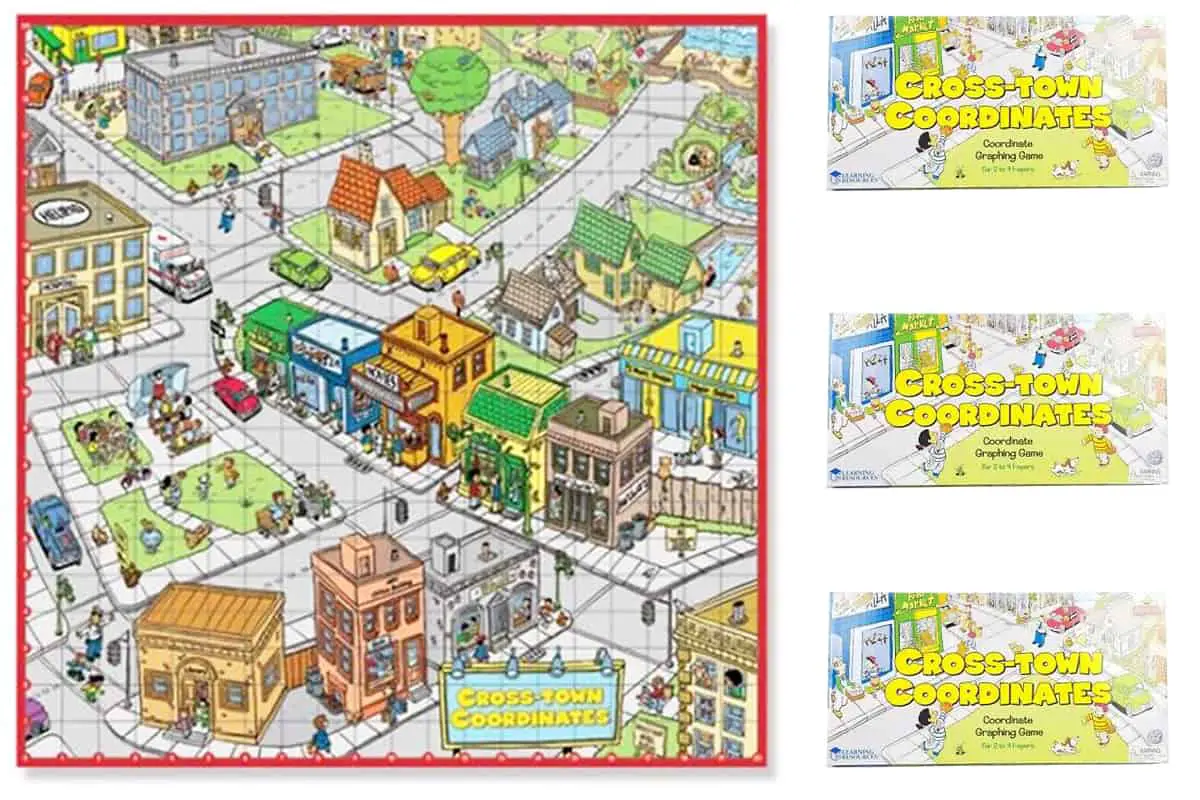
Players: 2-4 | Age: 10-11 | CCSS Grade: 8
Learning Resources Crosstown Coordinates is a double-sided board game that teaches students how to find coordinates on the Cartesian plane. One side of the board has only the positive portion of the x and y axes. Flip the board over and you’ll get the full Cartesian plane.
is a double-sided board game that teaches students how to find coordinates on the Cartesian plane. One side of the board has only the positive portion of the x and y axes. Flip the board over and you’ll get the full Cartesian plane.
Students often confuse the x coordinate with the y coordinate. Therefore, they plot points incorrectly. This game helps them clearly visualize where each point should be placed and lessens the chances of them plotting points incorrectly.
The best feature of this game is that students can check their own answers. If the position of their pawns doesn’t align with the image on the back of the card, they’re incorrect. This increases the teacher’s flexibility to walk around the classroom to check on each group’s progress rather than being called from all directions to check answers.
However, the game will become boring after about ten minutes because of its simplicity. It is, therefore, best to use it either during the first ten or last ten minutes of a lesson about plotting points on a graph. Teachers shouldn’t plan for the game to take up an entire class session.
Geometry Board Games for Middle School and Up
Shepherd (Coool Toool)
★★★☆☆
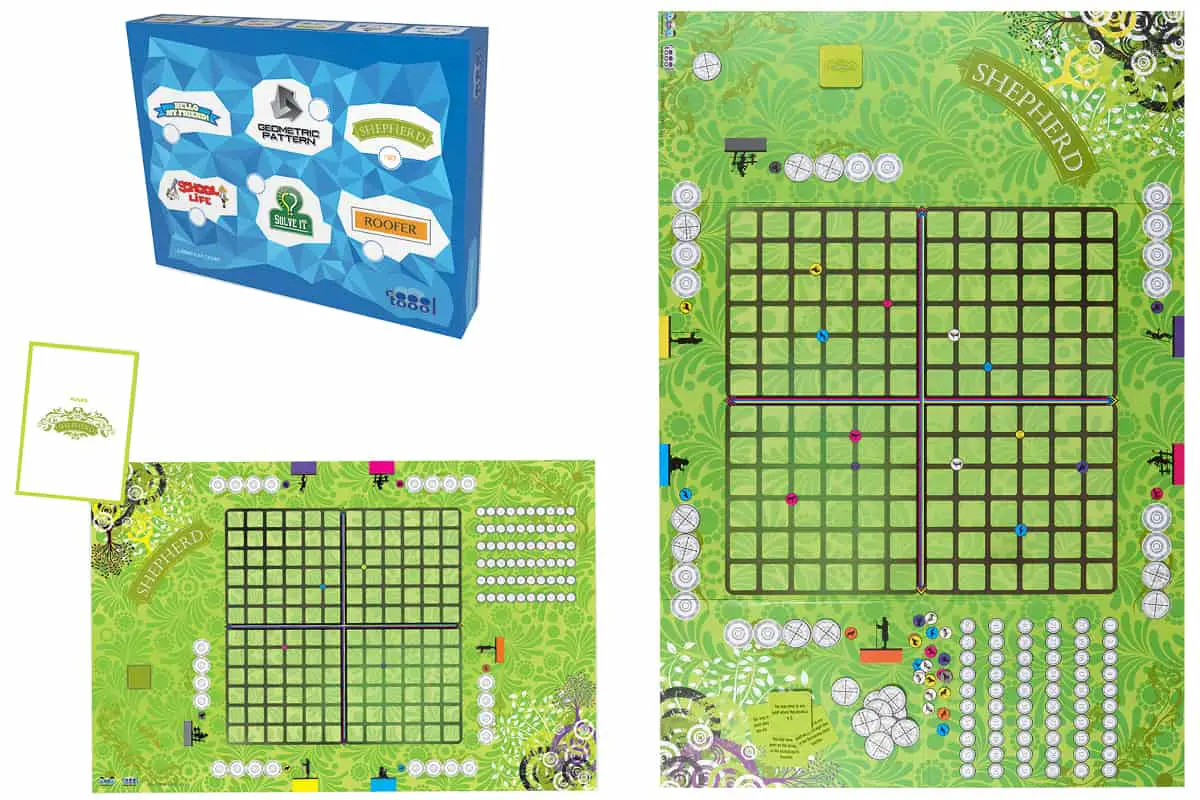
Players: 2-6 | Age: 13+ | CCSS Grade: 10
Shepherd helps students learn how to plot linear functions. It takes some time to understand how to play the game so it’s better suited to more advanced learners. With this game, students will practice:
helps students learn how to plot linear functions. It takes some time to understand how to play the game so it’s better suited to more advanced learners. With this game, students will practice:
- Identifying the graphs of some most common linear functions
- Plotting points on the Cartesian plane
Shepherd has two drawbacks. It is expensive for teachers who would want to purchase several sets, and the rules are complicated. therefore I recommend using it in a Math club rather than in a whole class setting with mixed-ability students.
Other Games
There are few printed geometry board games, but many printable board games that add some fun to higher geometry concepts. I envisage making a blog post for you on those printables. Tell me in the comments if you are interested to have this new post.
One of them is the Pythagorean Theorem Board Game , proposed by the “High School Math Adventures” blog. Pythagorean Theorem is an easy to understand geometry concept. However, some students confuse the sides of the right-angle triangle and, therefore, confuse the formula. This helps address this challenge. Teachers can use this great revision game after the concept has been taught.
, proposed by the “High School Math Adventures” blog. Pythagorean Theorem is an easy to understand geometry concept. However, some students confuse the sides of the right-angle triangle and, therefore, confuse the formula. This helps address this challenge. Teachers can use this great revision game after the concept has been taught.
Edudingo.com is a participant in the Amazon Services LLC Associates Program, an affiliate advertising program designed to provide a means for sites to earn advertising fees by advertising and linking to Amazon.com. We also participate in other affiliate programs which compensate us for referring traffic.
